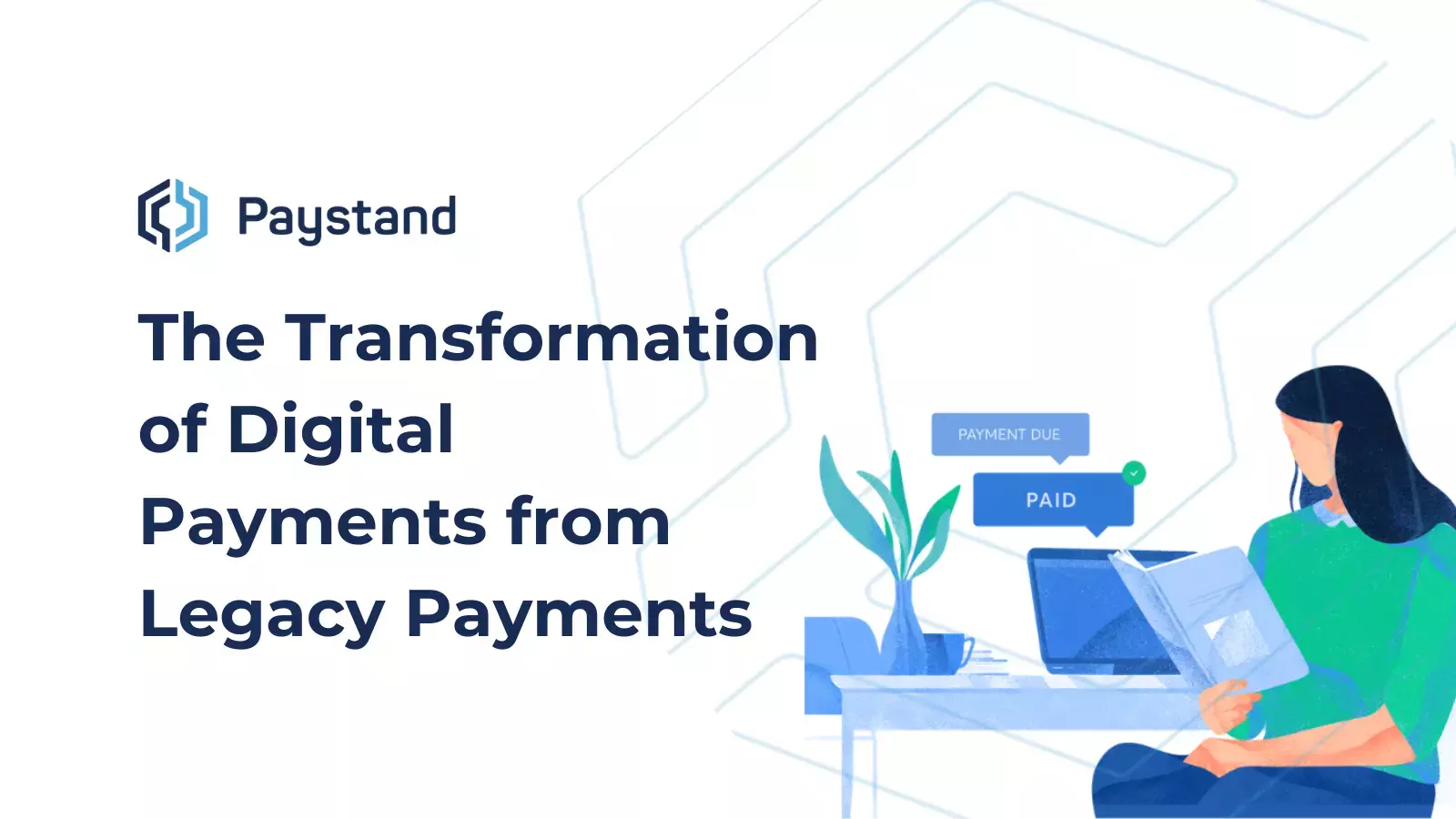The Transformation of Digital Payments from Legacy Payments

As businesses become more tech-savvy, so must their business process. This is true for B2B payments, where a digital transformation is currently underway. And it’s all for the better—there are numerous benefits to switching to digital payments.
In this article, we’ll guide you through the digital payments transformation and highlight the legacy trends that are going out the door.
Legacy Payments vs. Digital Payments
It’s no contest—digital payments are much more secure, reliable, and efficient than traditional, legacy payments. However, it’s still worth comparing the two to see the growth of digital payments we’re experiencing.
Legacy Payments
Regardless of how secure and efficient digital payments might be, there are still some who hold on to legacy banking and payment processes. Some of these processes may include:
- Cash: While not very common in the B2B space, some businesses try to pay their suppliers in cash payments. This is both insecure and difficult to track. Cash should be abandoned as a regular B2B payment option.
- Credit cards: Credit cards are an easy way to complete B2B payments. They also give both sides of the transaction rich information about the payment, including how much was paid and at what time. However, credit card payments are prone to fraud, causing $27.85 billion of worldwide losses in 2018. These payments also carry the illusion of being free, but at least one party likely pays a hefty processing fee to complete the transaction.
- Paper checks: Paper checks continue to make up 50 percent of B2B payments. While more secure than cash payments, checks are still incredibly easy to lose and are frequently prone to error and fraud.
- ACH: Automated clearing house (ACH) transfers funds from one business account to a third-party account. This payment method requires both sides of the transaction to share their personal banking information. While it can be effective for recurring payments, sharing banking information can increase the risk of privacy and fraud issues.
Of course, these payment methods are slowly on their way out the door. Paper check usage has dropped dramatically in the past few years, and that trend will only continue as more secure payment methods are introduced.
Digital Payments
Fortunately, businesses no longer have to rely on those antiquated legacy payment solutions, because advanced digital trends have emerged. Here are some methods that are accelerating the digital payments transformation:
- Virtual cards: Virtual cards are essentially virtual credit cards. They offer all of the benefits of using a credit card (convenience, access to larger funds) while also improving on their drawbacks (improved security, better transaction details).
- Cryptocurrency: Over 14 percent of Americans are currently invested in cryptocurrency. As more consumers and businesses invest in the digital economy, some businesses have taken it upon themselves to accept crypto for B2B transactions. While crypto use isn’t yet widespread, it will likely continue to capture market share as people become more comfortable with the idea of cryptocurrency.
Challenges of Moving to Digital Payments
Unfortunately, the B2B digital payments landscape is not a fool-proof solution. There are still a few pitfalls companies may run into when trying to integrate digital payments into their business processes. Here are a few challenges to consider.
Increasing Security Needs
While digital payments are astronomically more secure than many legacy payment options, there are still some cybersecurity issues to be addressed. Businesses are particularly vulnerable to cyberattacks, as the financial information of their clients can be targeted and breached by the public.
It’s important to remember that most digital B2B payments options have their own built-in security protocols, but it is still a good idea to be cautious and be sure your information is secured.
Lack of Businesses that Currently Use Digital Payments
Since digital payments are still on the rise, there are plenty of businesses that have not adopted them into their practices. And unfortunately, both sides of a B2B transaction must use a digital payment system for the process to work.
So even if you do adopt digital payments into your business, there’s no guarantee your long-time partners will do the same. It’s still worth making the switch now, as digital payment usage will only continue to grow.
Learning Curve for Businesses
You want your payments to be streamlined and easy. While digital payments offer that experience in spades, there can be a little bit of a learning curve. Thankfully, most digital payment solutions offer support to staff to teach you the basics of the technology.




